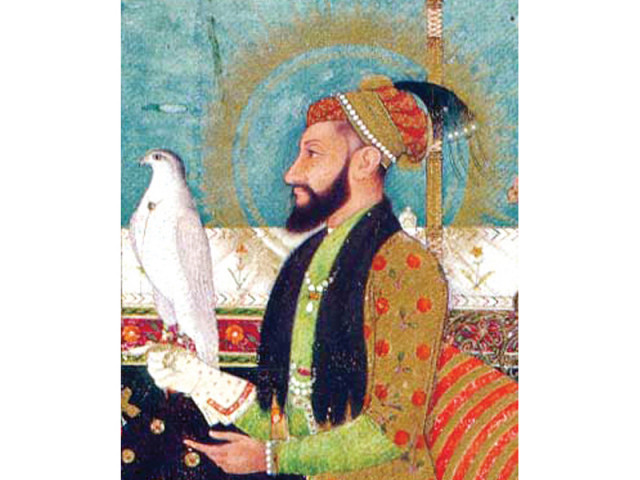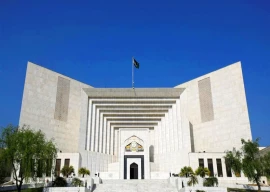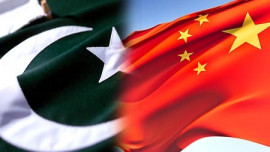
Most historians who study the Mughal Empire have sought to blame the sixth emperor entirely for its collapse, contrasting his religious conservatism with his great grandfather Akbar’s eclectic tolerance that undoubtedly led to architectural innovations and cultural synthesis during the latter’s reign. Those who admire the synergetic traditions that developed in Akbar’s court point to the stylistic fusion that took place in Fatehpur Sikri and to how some talented Hindus played an important role in his administration.
But even as Aurangzeb’s sectarian and messianic tendencies may have been the immediate catalyst for some of the rebellions that eventually triggered the downfall of the Mughal Empire, they should not be seen as the sole reasons for the empire’s disintegration. Challenges to Mughal rule had already begun right after Akbar’s military successes and historians, who write admiringly and uncritically about Akbar’s “secularism” and eclectic tastes and draw too sharp a distinction between Akbar and Aurangzeb, miss many such crucial points.
One of the points that these historians appear to overlook is that although most Mughals were consciously “secular”, at no point during their rule did they allot administrative posts in proportion to the actual population of Muslims and Hindus; Muslims were always over-represented. It is pertinent, then, that although Aurangzeb identified closely with Islamic orthodoxy, more Hindus were employed in his court than Akbar’s. Aurangzeb, like his predecessors, continued the practice of seeking alliances with Hindu rulers but he abandoned the practice of developing marital ties with them. This decision did come with a cost and it is true that without the bonds of inter-marriage and with a tax base that was becoming less stable, the motivation for the Rajputs to fight Mughal battles began to wane.
Furthermore, in their support of the arts and music, the tastes of the early Mughals remained strongly biased towards the Muslim traditions of Central Asia and Persia. The only foreign non-Muslim influences were the Chinese traditions. Miniatures sponsored by Babar were entirely in the Samarqand/Bukhara tradition while, during Akbar’s rule, Persian and Western imitations also became popular.
Interestingly it was only with Akbar’s son Jahangir, who was born of a Rajput mother, that the Mughal arts lost their hotchpotch and uneven character and began to develop a distinctive and more consistent style. Jehangir was considerably influenced by Rajput tastes and rewarded skilled Hindu artisans with prominent positions in his court. With a remarkable eye for excellence in design and execution in the arts and crafts, he encouraged talent and promoted merit without discrimination. He also took an interest in local flora and fauna and, like Akbar, had an interest in philosophy. Aurangzeb’s elder brother Dara Shikoh and father Shah Jahan were inheritors of this taste for creative sophistication and ornamental exuberance.
Yet even as it became more influenced by indigenous Indian cultures, Mughal court culture remained inaccessible to ordinary citizens of the empire. With Shah Jahan, a refined delicacy came to define courtly tastes, but there was also a trend towards rarefied formalism, which prevented the Mughal tradition from imbibing popular and folk influences in the manner of the Rajput or Bundelkhand rulers.
Mughal courtly culture also remained somewhat apart from the folk traditions of the Indian masses through the promotion of Persian as the language of culture, and Urdu as the language of administration. Although popular with urban intellectuals and the cultural elite, Urdu, with its plethora of Persian and Arabic words and non-Indian script could not gain mass acceptance and remained a language primarily of the elite. Outside the Hindi belt, this was an even bigger problem.
But it was not just a cultural aloofness or the dominance of the Muslim minority that made Mughal rule unpalatable. Even more fundamental factors were in play. For instance, the high rate of taxation on the peasantry was simply unsustainable. But another important reason for the unravelling of Mughal power was that beyond Sindh, Punjab, Kashmir and the Yamuna and Gangetic plains, Mughal rule had simply not made enough of a positive contribution to justify its continuity.
It is therefore somewhat ironic that some of the highest admiration for the Mughal Empire’s “unification” of India into a highly centralised polity comes from people who are ardent advocates of economic and political decentralisation of modern India. Another factor often ignored is that the “unification” of India that Akbar had achieved was almost entirely through war and coercion.
But more importantly, the benefits of this centralisation did not flow throughout the empire. Some territories paid tribute but received no tangible gains in exchange. In particular, the regions corresponding to present-day Gujarat, Chhattisgarh, Chota Nagpur and Vidarbha, eastern Madhya Pradesh, Jharkhand and much of North Bihar were starved of investment, and experienced stagnation or decline.
Furthermore, beyond the main trade routes that linked northern India to the rest of the world, the Mughal state invested neither in agricultural expansion nor in manufacturing or infrastructure to promote trade. Since the bulk of the Mughal manufacturing towns was located either along the Yamuna and Gangetic plains (or along the Indus), it is no coincidence that Mughal legitimacy survived primarily only in these regions of India.
Thus, considering the steady drain of wealth from areas further away from Mughal capitals and urban centres, it was almost inevitable that alienation from Mughal rule would set in very quickly. The plateau regions of Central India (and other outlying regions) simply had no stake in a unified Mughal empire and that is why a broad and secular coalition of forces arose in defiance of Mughal authority in such areas.
Unfortunately, such shortcomings of Mughal rule have largely escaped the attention of serious historians in India. And those who have been critical have focused almost exclusively on the communal angle (on the repression of Hindu religion and culture), ignoring socio-economic and political factors that may have been equally, or far more, relevant. Communally focused critics of Mughal rule have often ignored how particular caste categories offered their services and allegiance to the Mughals, and received tangible benefits in return. The Kayasthas in particular experienced upward mobility as they rose from being scribes and junior record-keepers to holding important administrative posts, and achieved a social rank comparable to court Brahmins. Mercantile caste categories also had a stake in the success of Mughal rule. Hindu money-lenders and shopkeepers did quite well in the prosperous Mughal towns, and a majority of the top revenue administrators under the Mughals (even during the reign of Aurangzeb) were either Hindu Banias or Brahmins.
Bihar’s Maithil Brahmins had been promoted by earlier Islamic rulers, and their regional and local authority was not challenged by the Mughals. And while other regional Hindu rulers (such as the Mewar and Hill Rajputs, or the Bundelkhandis) often felt oppressed by Mughal rule, they nevertheless lived lives of considerable comfort and leisure, and this restrained them from organising collectively and mounting any serious challenge to Mughal rule.
But perhaps the most crippling deficiency of Mughal rule was the failure of Mughal rulers to devote even a fraction of their treasuries to anything resembling modern education. In that respect, Aurangzeb can be held to blame as he was especially sceptical about the relevance of modern science and technology. Whereas the European nations had begun to invest in printed books and public universities, the Mughal rulers demonstrated at best a passing interest in the sciences. As a result, even though the Mughal Empire under Aurangzeb had successfully fended off the expansion of European trading settlements in India, no durable foundation for the unity and scientific advancement of India had been laid by the Mughals. Mughal rule had left India largely incapable of dealing with the challenge of European military and cultural ascendance.
For British historians, however, treating Mughal rule as the high point of Indian civilisation has served a tactical purpose: by depicting it as such, they have tried to create an impression that all great things in India have required external stimulus.
Their interest in Mughal rule has also stemmed from the subconscious desire to represent colonial rule in India as not too different from that of the Mughals. The fact that the Mughals came as alien conquerors and created a vast empire gives apologists for British colonial rule an excuse to ignore the uniquely devastating consequences of European colonisation.
That the Mughals increased the taxes on the peasantry, introduced a language that was laden with foreign words and written in a foreign script, and in certain respects remained aloof and apart from indigenous cultural trends, makes British rule appear more a continuation than a sharp departure from the Indian experience.
But in spite of such parallels, there are vital and important distinctions that separate Mughal rule from British rule in India. Firstly, at no point during the Mughal rule was the impoverishment of the peasantry and the broad masses as extreme as it was during the period of British colonisation. It should also be noted that whereas Indian manufactures acquired a well-deserved reputation for outstanding quality, and were in great demand during the reigns of Jahangir and Shah Jahan, India became a dumping ground for European exports and manufacturing suffered a precipitous decline after the Battle of Plassey.
For all their flaws and alien instincts, the Mughals came to settle in India. Over time, they became steadily indigenised and that is why the last Mughals resisted the British during the rebellion of 1857. Local influences rubbed off on the Mughals to a much greater extent than on the British rulers.
But more importantly, even as the Mughals frittered away the wealth they extracted from the peasantry, their legacy of fine arts and architecture remained in India and India’s wealth was not systematically transferred to another country (as was the case with the British).
Thus, no matter how artfully British intellectuals have used their representations of Mughal rule to rationalise the immiserization of India during British rule, the colossal drain of wealth and destruction that took place simply has no parallels in Indian history. For that reason, Mughal rule cannot and should not be equated to European colonisation.
Published in The Express Tribune, Sunday Magazine, August 12th, 2012.


















COMMENTS
Comments are moderated and generally will be posted if they are on-topic and not abusive.
For more information, please see our Comments FAQ